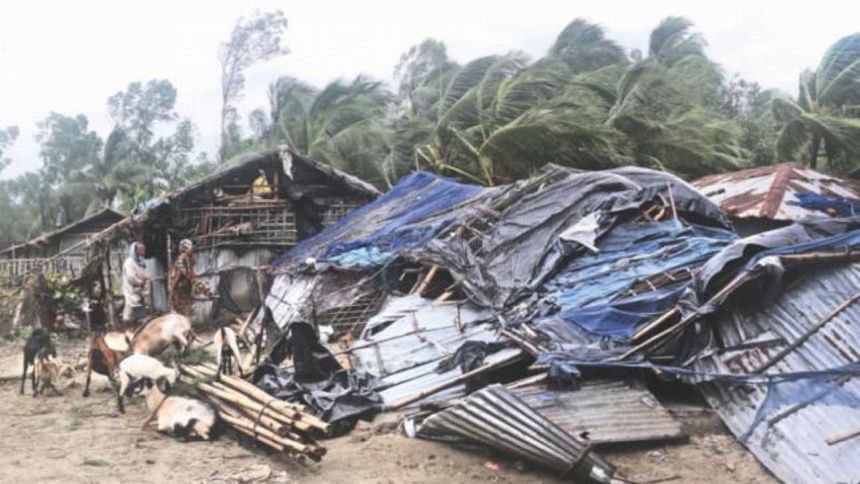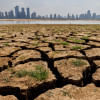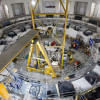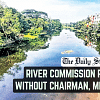Proofing infrastructure against climate change

The Asian Development Bank (ADB) believes that countries like Bangladesh are in the forefront of Asian nations that are suffering infrastructure breakdown due to climate-induced changes. We suffer broken power lines every time a storm hits us, floods cause fractured roads and shatter rail links, landslides, erosion – all have an impact on infrastructure. Indeed, by the ADB's estimates, no less than 45 developing member countries suffered losses averaging USD 126 million a day between 2006 and 2015 due to natural disasters. This brings us to the question: what exactly can Bangladesh do to protect the huge infrastructure developments that have commenced of late and those already in place?
The concept of "climate proofing" means taking measures such as elevating road embankments in areas prone to flooding, relocation of water intake and treatment facilities away from vulnerable areas and most importantly, improving design and maintenance of infrastructure. As pointed out in "Meeting Asia's Infrastructure Needs", a policy document published by ADB, "greener" infrastructure will pay an increasingly important role as global temperatures rise. We have no option but to adapt to changing conditions. Yes, going "green" is going to be expensive in the short run, but the long term benefits are obvious. It is estimated that adaption costs will raise the bill USD 200 billion for Asian economies between 2016 and 2030; and by mitigation we mean Asian economies moving away from fossil fuels to cleaner technologies. Asia's adaptation costs could be as high as USD 41 billion annually, most of which will go into the transportation infrastructure.
So, how would we go about protecting our infrastructure? As stated before, road and rail links will continue to suffer from increasing floods and erosion damage. With more hot days than cold in our seasons, we will see faster degradation of roads and railways as materials used will wear out faster. The monsoon will involve more intense rainfall which too will result in faster wear-and-tear for roads and rail. Cyclones and saline water have the same effect. According to an Information Brief titled "Climate Change and Infrastructure in Bangladesh" by the Ministry of Environment and Forests (in collaboration with IUCN), "future climate change induced high intensity events pose huge threats to existing physical infrastructure. Damage to highways due to flood alone is estimated to be around 1,011 and 3,315 kilometers by the year 2030 and 2050, respectively. The corresponding damage to embankments is estimated to be about 4,271 and 13,996 km by the year 2030 and 2050, respectively."
We can adopt measures to mitigate the fallout from climate-induced changes. To protect embankments that carry roads and rail links, vegetation such as trees can be planted to decrease chances of erosion. The plants also help remove carbon dioxide from the atmosphere. We need to invest in research and technology to develop materials that are more resistant to extreme temperatures. If we want to protect our roads against heavy rainfall, we must start constructing roads adhering to standards with better surface drainage capacity around road links, putting in pump facilities to drain out water around critical infrastructure. There is need to do modelling studies to protect areas around major rivers, i.e. to find out precisely how high our embankments need to be, usage of advance materials like geo-textiles to protect embankments, what sort of drainage structures we need in terms of culverts regulators, etc. to effect smoother outflow of water during floods.
These are some of the measures that can be adopted. But what is obvious is that all this will require serious financing. And it also has a lot to do with capacity building of the civil bureaucracy to improve their understanding about project economics and execution. In Bangladesh, we are suffering from acute shortage of power and other infrastructure facilities. We are also suffering from an acute shortage of capacity to implement many of the projects being undertaken over the last few years on infrastructure. In addition, traditional means of construction and planning needs to be overhauled.
We need multi-stakeholder involvement that includes the government, the business community, and bi-lateral and multi-lateral development agencies to undertake modelling studies on probable impact of climate-induced changes. It is not just about making commitments in the budget for maintenance work. National policies need to be adapted to take cognisance of the fact that there will be more freak weather changes in the coming years and decades. We need to be prepared for the toll it will take on our investments, and yes, we need to make investments to help maintain the shelf life of the billions going into infrastructure development. ADB is correct in its assessment that the long term benefits of mitigation and adaptation far outweighs the huge costs involved in the short run.
The writer is Assistant Editor, The Daily Star.










Comments